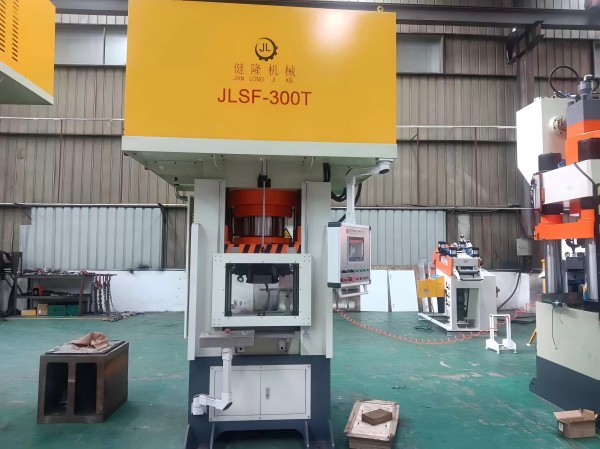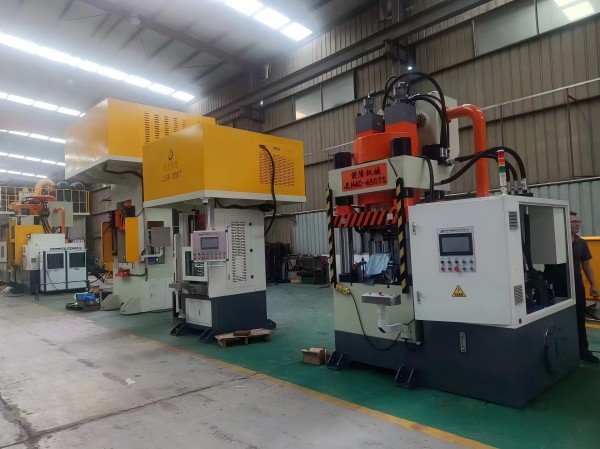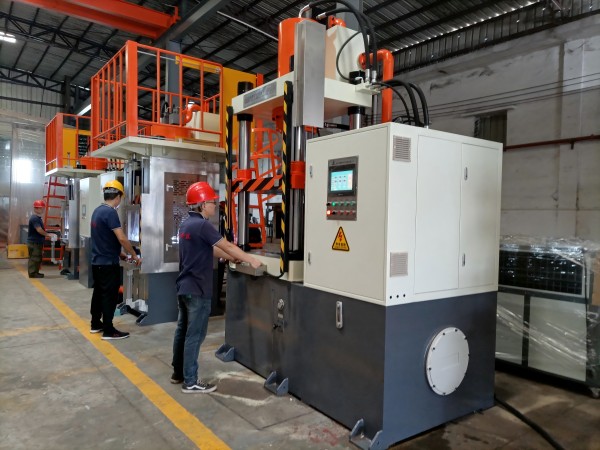The electrical system of the hydraulic press is an important component of it, controlling the start, operation, stop and various operation processes of the hydraulic press. In the daily use of the hydraulic press, common faults in the electrical system may cause the equipment to fail to operate normally or cause safety hazards. Understanding these common faults and their troubleshooting methods can help maintain the normal operation of the hydraulic press and extend the service life of the equipment.

1. Common faults in the electrical system
1.1 Power failure: The hydraulic press cannot start, the indicator light is off or there is no power display at all.
1.2 Contactor failure: The contactor cannot be attracted, the hydraulic press cannot start or suddenly stops during operation.
1.3 Relay failure: The control circuit cannot work normally and related actions cannot be performed.
1.4 Button switch failure: The start, stop or other function buttons on the operation panel fail, and the hydraulic press cannot be operated normally.
1.5 Motor failure: The hydraulic press cannot start normally, or the motor is abnormally hot, smokes, or even burns after starting.
1.6 Overload protection device action: The hydraulic press suddenly stops during operation, and the control system displays an overload protection alarm.
1.7 Control circuit failure: Some functions of the hydraulic press cannot operate normally, such as failure of upper and lower travel limits or failure of automatic control.
1.8 Electrical connection failure: The electrical system is sometimes good and sometimes bad, intermittent failures occur, and the hydraulic press works unstably.
2. Troubleshooting methods
2.1 Power supply troubleshooting:
2.1.1 Check the power supply: Confirm whether the hydraulic press is connected to the correct power supply, check whether the power cord is damaged or loose, and repair or replace it if necessary.
2.1.2 Check the switch and fuse: Check whether the power switch and fuse are normal. If damaged, replace them immediately, and check the status of the circuit breaker in the electrical cabinet.

2.2 Contactor troubleshooting
2.2.1 Replace the contactor: If the contactor coil is damaged or the contacts are burned, it is recommended to replace a new contactor immediately.
2.2.2 Check the control circuit: Use a multimeter to measure the voltage across the contactor coil to ensure that the control circuit is working properly.
2.3 Relay troubleshooting
2.3.1 Replace the relay: If the relay coil is burned out or the contact fails, replace it with a new relay in time.
2.3.2 Check the current and control circuit: Measure the current value in the control circuit to ensure that it is not overloaded, and check the relevant electrical wiring.
2.4 Push button switch troubleshooting
2.4.1 Check the inside of the button: Disassemble the push button switch, check its internal contact, clean the contacts or replace the button.
2.4.2 Check the wiring: Confirm whether the wiring of the push button switch is tight, and rewire if necessary.
2.5 Motor troubleshooting
2.5.1 Check the power supply voltage: Use a voltmeter to measure the power supply voltage to ensure that the working voltage of the motor is within the normal range.
2.5.2 Check the motor winding: Check the winding resistance of the motor to confirm whether there is a short circuit or open circuit, and replace the motor or repair the winding if necessary.
2.5.3 Check the load: Confirm the load of the hydraulic press to avoid overloading the motor.
2.6 Overload protection troubleshooting
2.6.1 Check the load: Check the working load of the hydraulic press to confirm whether it is overloaded. If necessary, reduce the load or adjust the process parameters.
2.6.2 Adjust the protector: Check and adjust the setting value of the overload protector to ensure that it matches the rated current of the equipment.
2.7 Control circuit troubleshooting
2.7.1 Check the control components: Check the time relay, PLC module and other components in the control circuit to ensure that they are working properly. If damaged, they should be replaced in time.
2.7.2 Check the limit switch: Confirm the working status of the limit switch, and adjust or replace the limit switch if necessary.
2.8 Electrical connection troubleshooting
2.8.1 Tighten the terminals: Check all the terminals in the electrical cabinet to ensure that the connection is firm and not loose.
2.8.2 Clean the terminals: Clean the oxides or corrosion on the terminals to ensure good contact. Replace the terminals if necessary.

Common faults in the electrical system of hydraulic presses often involve power supply, control circuits, actuators, etc. Most faults can be prevented by regularly checking the operating status of the electrical system and ensuring that the electrical components and circuits are firmly connected. When a fault occurs, check each link step by step to ensure that the problem is solved promptly and effectively, thereby ensuring the safe and stable operation of the hydraulic press. If you have any questions about the above information or need more detailed information, please feel free to let us know and we will serve you wholeheartedly.
Contact: Jessie
Phone: 18988729072
E-mail: lifuyan45@gmail.com
Whatsapp:+8618988729072
Add: Guangyi Industrial Park, No.2 Jinfu West Road, Tanglip, Liaobu Town, Dongguan City, Guangdong Province, China
We chat
